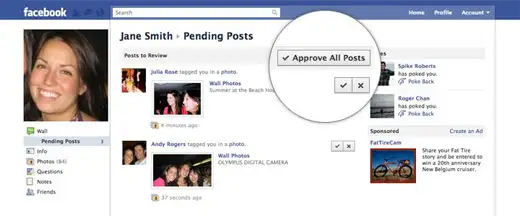Facebook has decided to introduce a new set of privacy settings for users. These new settings are just modifications of the earlier privacy settings mechanism, making it easier for users to make changes that they would like to incorporate.
These changes to how users set privacy levels for their content have been made keeping in mind the requests that Facebook has received from users over a period of time. It is no small coincidence that these changes come as Google’s own social network, Plus, is quickly growing in popularity and uses a much simpler privacy setting mechanism than Facebook.
It will now be easier for users to share photos, posts, tags and other content only with those whom they wish to share the information.
Most of the changes have been made by moving the controls from a separate settings page to a position directly inline, next to the photos or tags.
Setting privacy levels on Facebook next to a content tag
To begin with, users will be better able to control the information available on their profile. They will also be able to control who can see this profile.
The controls for these settings will now be available in a drop-down menu next to an icon, instead of being on a separate settings page. The user can control the settings with a single click.
Users will now be able to approve photos of themselves, when they have been tagged by someone, instead of being automatically visible to all as soon as they have been tagged. The user can now approve or reject a tag that someone has made for him.
It will be easy for users to see how their profile looks before others see it. The user will now be able to control who sees his posts. He can also add location and tag other people he is with, if he chooses to.
A drop-down menu with the terms, Public, Friends and Custom will be available to decide who should see the photos. This menu will be expanded in future.
Earlier the term, ‘Everyone’ meant that all on the internet could see the photo. This word has now been changed to ‘Public’ to better express what they mean.
Users will also be able to decide who can and cannot see their posts after the information has been posted, unlike in the past, when they had to make this decision before posting the matter. Earlier, users could add location only through the ‘Places’ feature on a smartphone. They will now be able to do so from any device.
Users will also be able to remove a tag that someone else has added, if they do not like it.
These changes will help to streamline and simplify the way users communicate through Facebook. Many of these features are already available on Google Plus which is doing very well.
The changes are expected to start rolling out from Thursday 25th August.










